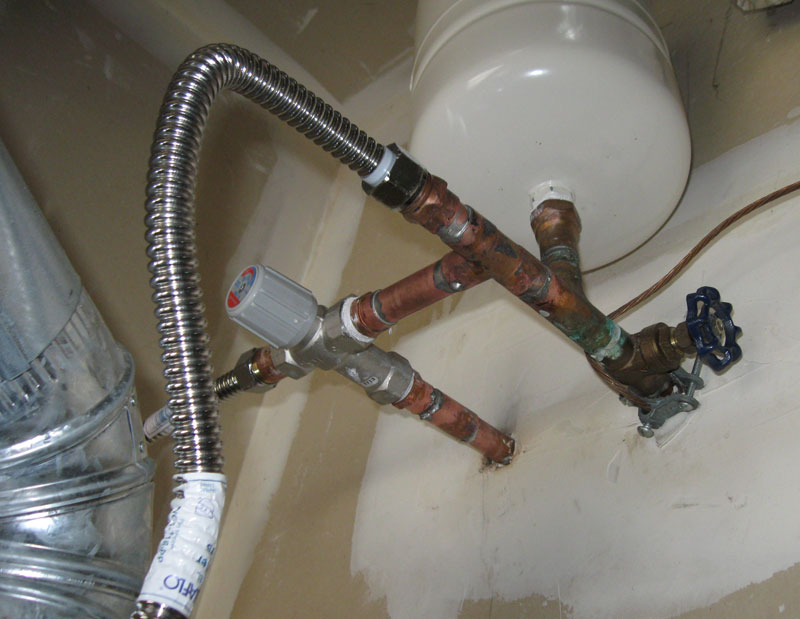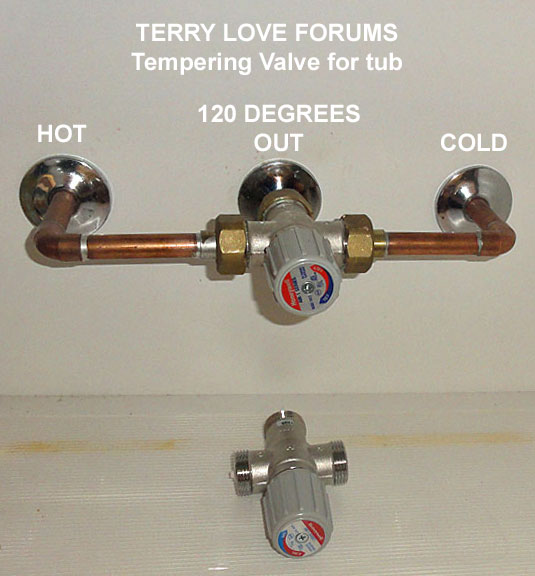RustyShackleford
New Member
I plan to install a Honeywell-Residio thermostatic mixing valve (model AM101-SB-1LF) on a 50gal conventional electric water heater in our vacation house, in order to make more usable hot water available to the 3 bathrooms (4 bedrooms). I've got a couple of concerns ...
1. First, because of the existing plumbing, I'd like to install it with the tempered water outlet pointing upwards; I'm confused about whether this is acceptable, as the instructions are confusing (https://digitalassets.resideo.com/damroot/Original/10014/62-3075EFS.pdf). The paragraph on the lower-right of the first page says "can be installed in any position consistent with the intended use" but then "for domestic hot water supply, the valve must be installed as shown in Fig. 1" and Fig.1 shows the thing oriented with the outlet pointing sideways and the hot and cold coming in from the bottom and top (it's also showing a recirculation system, which I don't have).
2. How fool-proof is the anti-scalding technology ? Especially as the house will be rented a good bit, and small children present when we are using it, I'm concerned about setting the water heater as high as 160. Of course, even 140 gives me a third again as much hot water - if I understand correctly, assuming the incoming cold water is at 60 degrees, since (140-60)/(120-60) = 1.33.
1. First, because of the existing plumbing, I'd like to install it with the tempered water outlet pointing upwards; I'm confused about whether this is acceptable, as the instructions are confusing (https://digitalassets.resideo.com/damroot/Original/10014/62-3075EFS.pdf). The paragraph on the lower-right of the first page says "can be installed in any position consistent with the intended use" but then "for domestic hot water supply, the valve must be installed as shown in Fig. 1" and Fig.1 shows the thing oriented with the outlet pointing sideways and the hot and cold coming in from the bottom and top (it's also showing a recirculation system, which I don't have).
2. How fool-proof is the anti-scalding technology ? Especially as the house will be rented a good bit, and small children present when we are using it, I'm concerned about setting the water heater as high as 160. Of course, even 140 gives me a third again as much hot water - if I understand correctly, assuming the incoming cold water is at 60 degrees, since (140-60)/(120-60) = 1.33.



